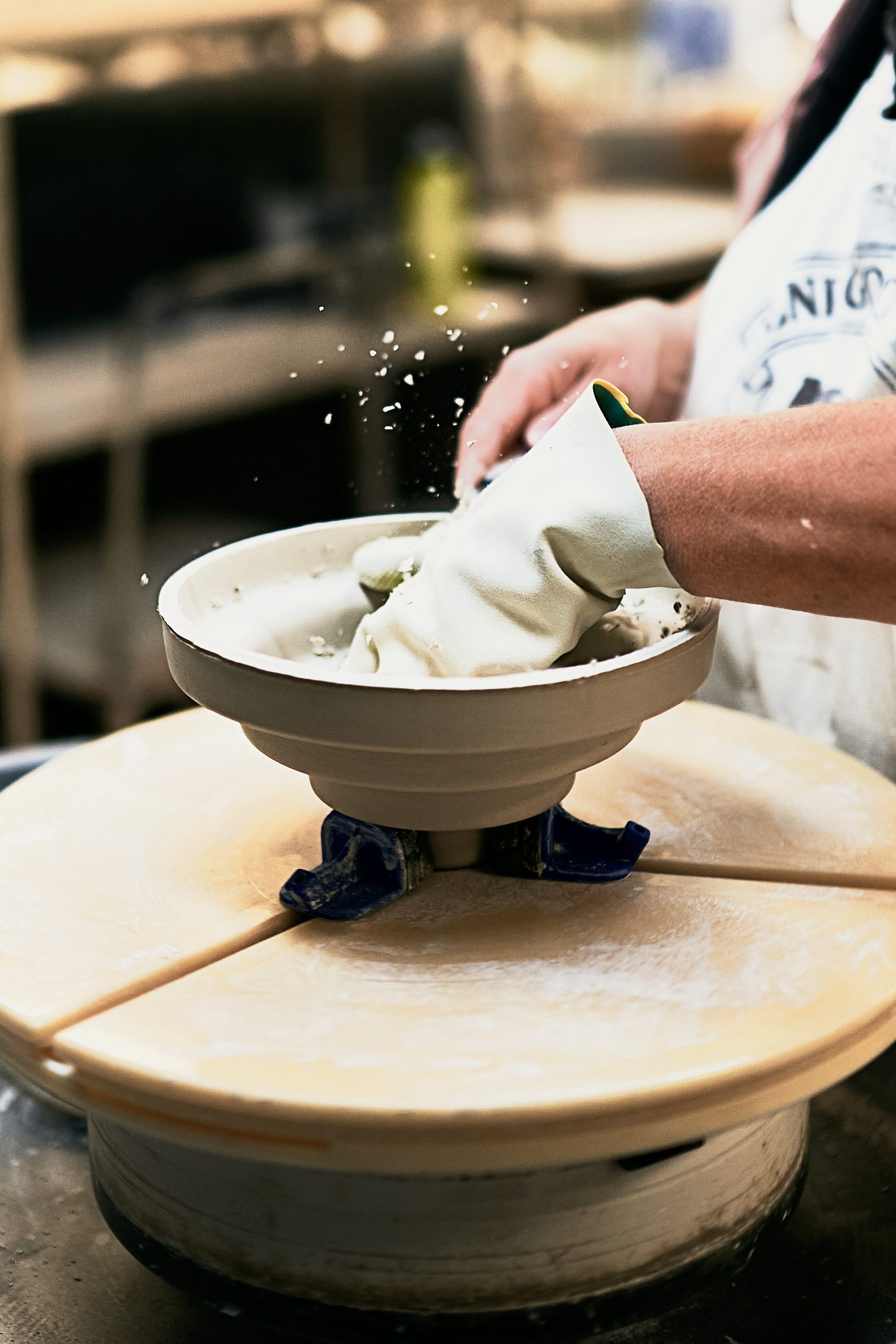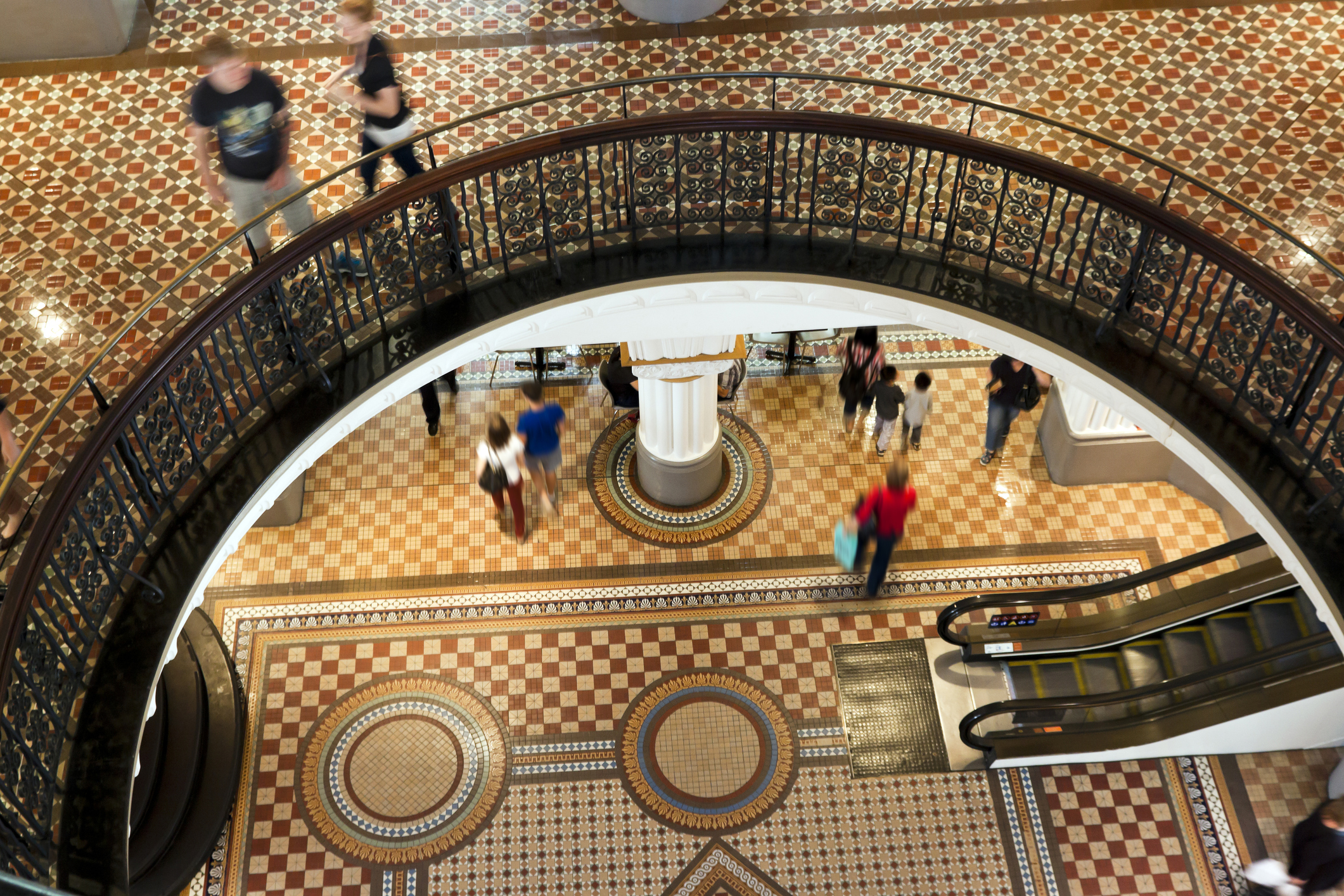Buying Australian: why it’s no longer a sign of parochialism
As the Australian made edition of Kanebridge Quarterly magazine hits stands this weekend, we examine the case for purchasing locally made product
Mention Australian made products to family and friends and it’s likely everyone will agree it’s a good thing to do.
Polling by Roy Morgan as recently as February this year shows 80 percent of shoppers consider buying Australian made products important, mainly because it supports local jobs and the wider economy. The survey also found that 67 percent of shoppers reported buying Australian-made products ‘often’ or ‘always’.
But while most of us are happy to buy, say, Australian made peanut butter or even skin care products, we’re less inclined to choose a locally crafted table over an imported product, mainly because of the price.
Canberra-based craftsman Rolf Barfoed says COVID changed attitudes to buying local. With many working from home and borders closed to everyone and everything — including many goods manufactured offshore — Australians began to reassess their buying practices, as well as their domestic environments.
“We got quite busy after COVID struck because people were forced to look inwards and instead of going overseas on holiday, they had a bit of money to spend locally,” Barfoed says of his workshop where he manages a team of three. “There were a lot of people working from home and they were looking at their homes more critically.”
Desks and bookshelves were a popular choice, as many looked to properly furnish home offices, while beds and bedside tables also rated highly, providing a sense of sanctuary and comfort during uncertain times.
However, as restrictions lifted and with more people growing concerned about rising cost of living pressures, Barfoed says he has noticed a shift in buying patterns.
“Ever since the threat of recession, things have tightened up and sales have slowed,” he says.
For more stories like this, order your copy of the latest issue of Kanebridge Quarterly magazine here
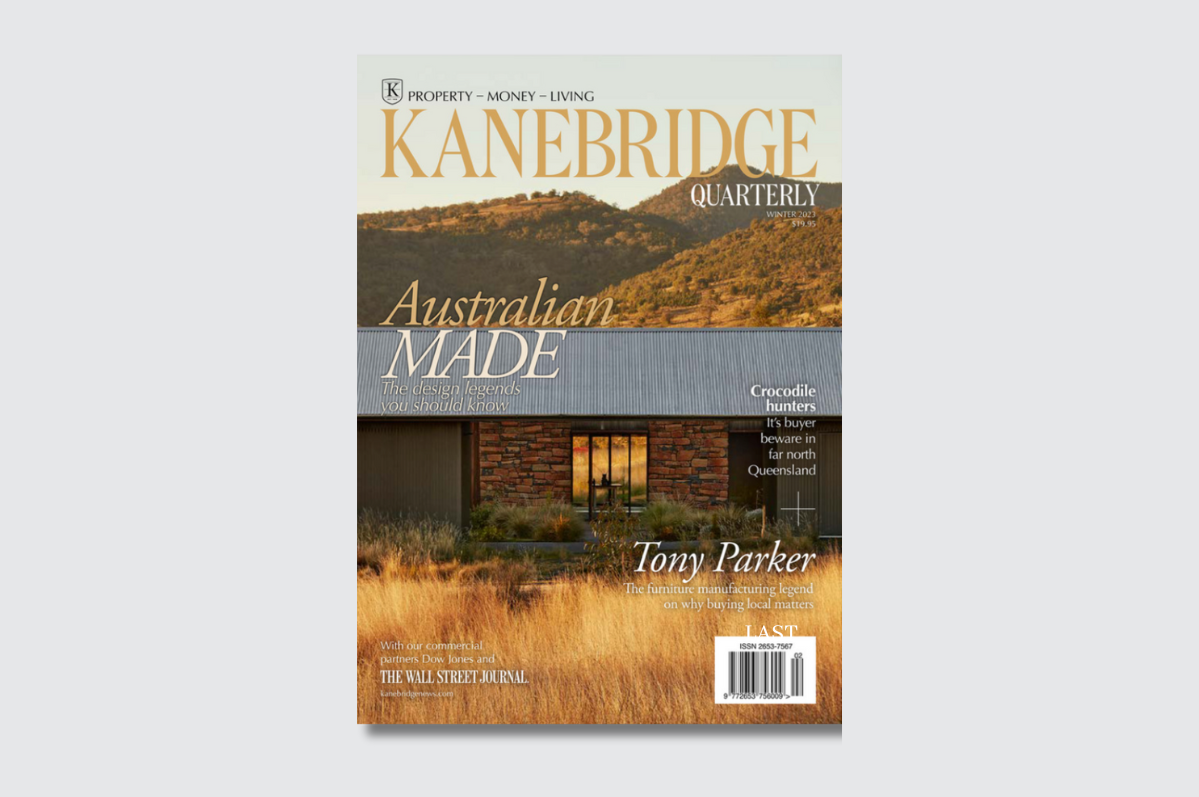
While some may be put off by the higher costs — a reflection of higher wages being paid to Australian workers — Barfoed says the final price is just the start of the story. He gains most of his work from Sydney and Canberra via word-of-mouth commissions, allowing buyers to connect with their piece of furniture from the start. And some connections are stronger than others.
“In Canberra there is a pool in Manuka and there was a big oak tree over the pool which came down in a storm,” he says. “We had people who had swum in that pool as children who asked if we could make something out of the tree for them, so we created two dining tables. It helps that the timber miller is well connected in town and he has the means to pick up trees like that.”
Most timber, however, is sourced through more traditional avenues, although local timbers have been harder to find since the 2019/2020 bushfires.
For those after something unique and fit for purpose though, the experience of commissioning from a local maker is unmatched.
“The option for customisation is a big factor and we will tailor it to exactly what the client wants,” Barfoed says. “It is always a nerve wracking experience handing over a piece of furniture. You want the client to be happy with your work.”
Kate Stokes, co-founder of award-winning Melbourne lighting and furniture studio Coco Flip says ‘locally made’ also means shorter lead times and more reliable supply chains for retailers, designers and homeowners.
“We have really good relationships with all our manufacturers which means there’s a lot more quality assurance,” she says. “If something goes wrong, you just send it back to us. You can’t do that so easily if it’s arrived by ship.”
While the products, which include their Coco pendant light, Mayu floor lamp and Sequence dining tables often do cost more upfront than imported items, Stokes says they are better financial investments over the long term.
“We want to design things that people are not going to tire of in five years so our designs are classic, contemporary and able to fit into a range of styles and interiors,” she says. “Construction has to be robust and material choices have to be solid and last a long time.
“We want people to love them for a long time.”
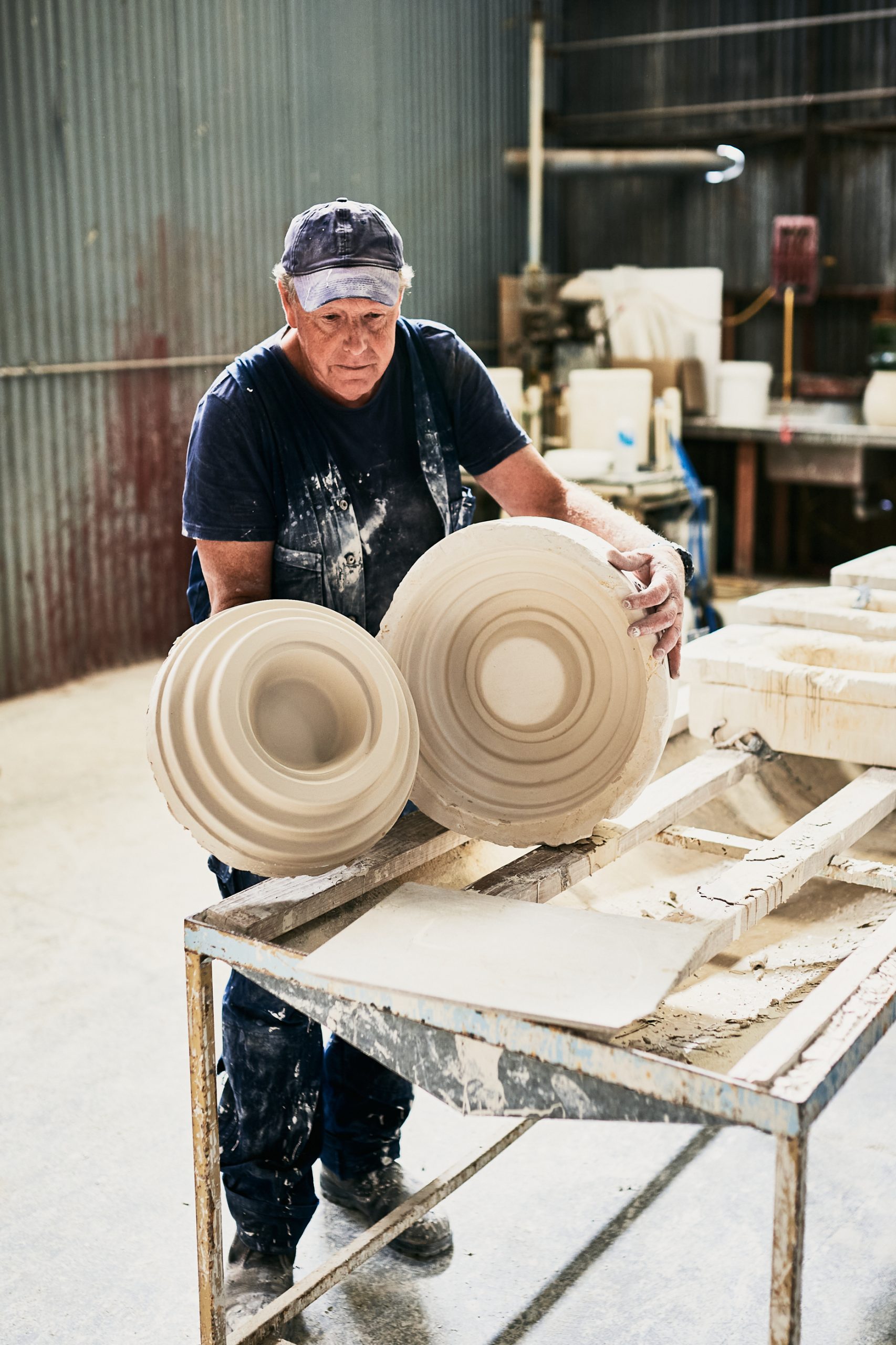
Stokes and co-founder Haslett Grounds also work with longstanding manufacturers such as Specialty Pleaters in Williamstown, which was founded in 1925 and is now the last remaining pleating studio in Melbourne.
“We love working with local manufacturers and Specialty Pleaters have been in business for about 100 years but they are potentially facing closure because production is increasingly going off shore,” Stokes says.
Australian furniture manufacturing legend, Tony Parker, of Parker Furniture fame says if Australians don’t support locally made furniture and homewares, they will cease to exist — and those traditional skills will all but vanish.
“When you buy locally made, the goods are also serviced in Australia and the infrastructure to manufacture is here,” Parker says. “You have apprenticeships for training people in cabinetwork, upholstery and other skilled trades.”
He laments what he sees as the decline in quality of mass produced goods flooding the Australian market from overseas, not just because it means jobs are taken offshore, but that buyers are not getting value for money.
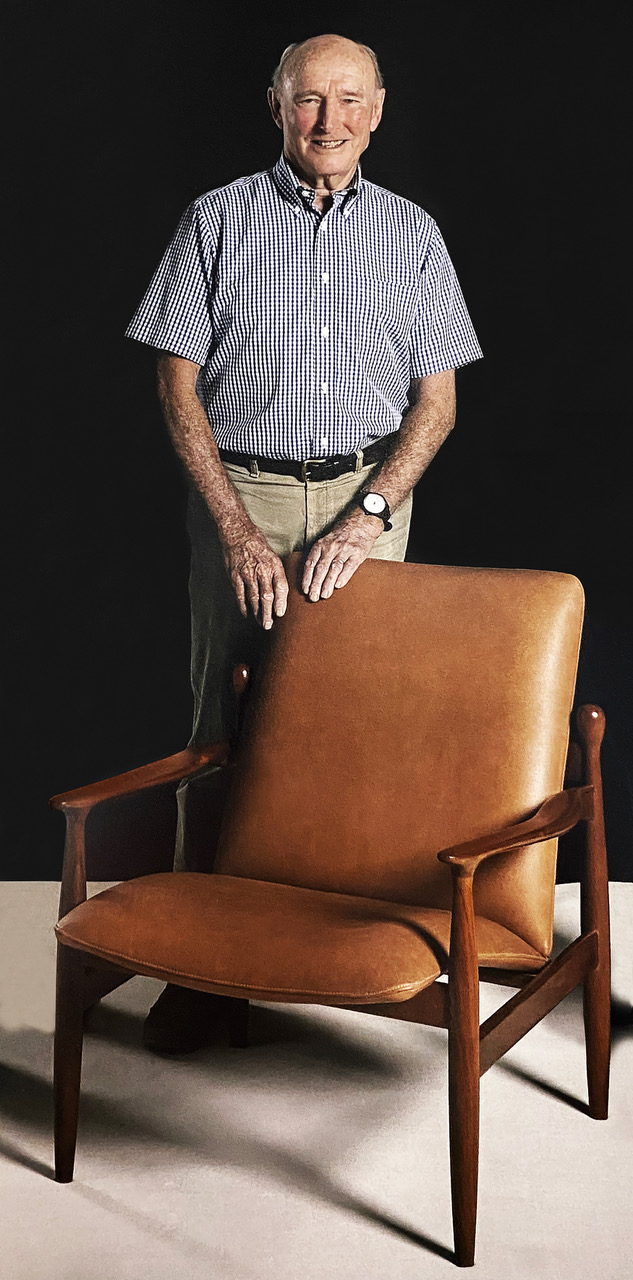
“They have slowly eroded quality,” he says. “Everyone closes on price. In actual fact, people are paying more than they were in the 70s, relative to wages, and it was better made then.
“The retailer is looking for a cheaper price and the customer is not looking at quality.”
Fred Kimel, founder of Handkrafted, which connects Australian makers directly with the public, says buying locally is an investment in the future, in more ways than one.
“The result is (a piece) typically much higher quality than the vast majority of furniture that is manufactured overseas,” Kimel says. Locally made bespoke furniture is made-to-last and will retain value as it can always be sold or passed on — it’s far less likely to find its way into landfill.
“On the sustainability front, our local regulations help to ensure that timber used by local makers is forestry certified and not from unregulated or illegally logged forest timber.”
And if it’s that lovely rush of endorphins experienced when you buy that floats your boat, buying an Australian made product has to be the ultimate shopping high.
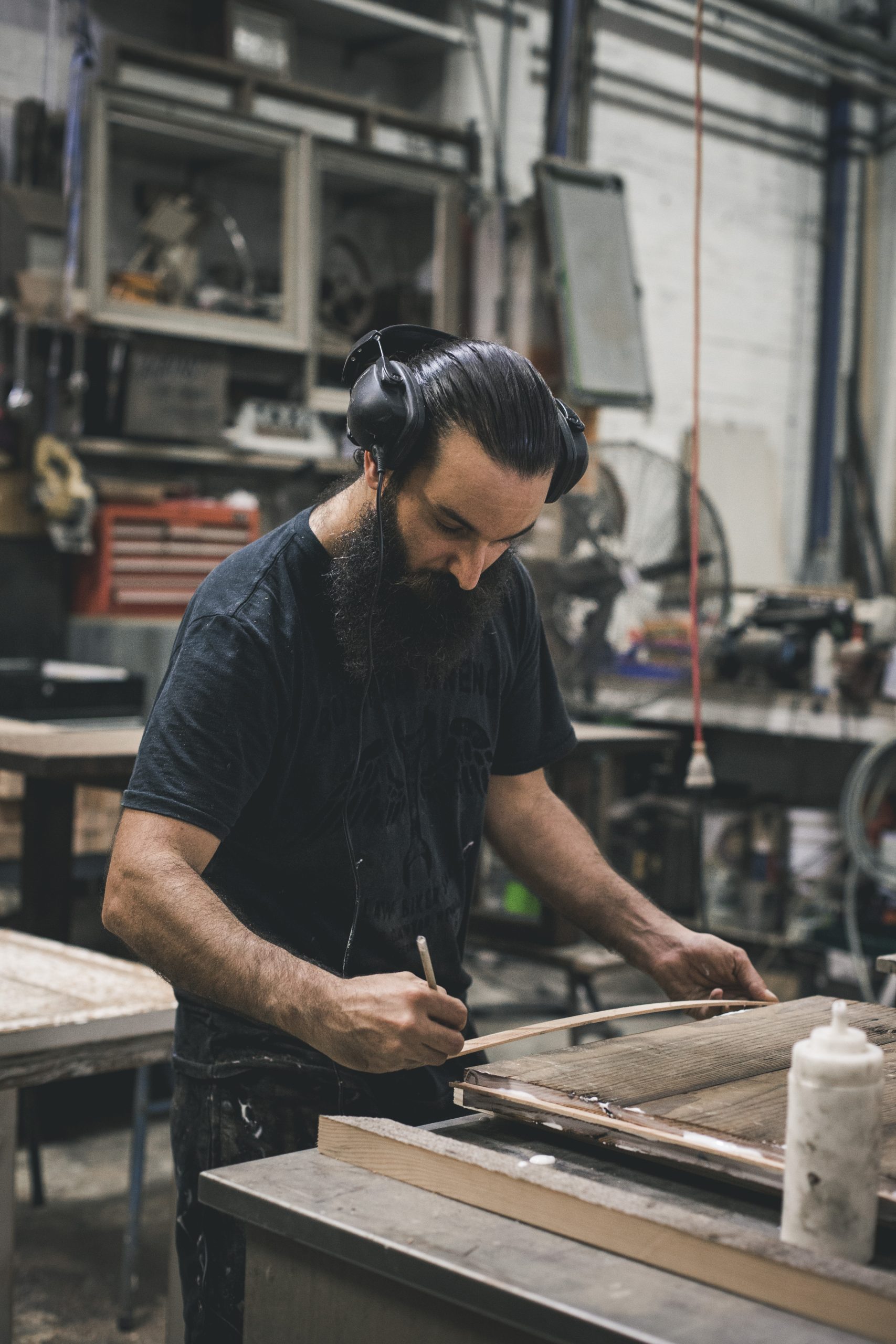
“Perhaps one of the biggest draw cards is simply the enjoyable process of working so closely with a local maker,” Kimel says.
“Clients will often visit their workshops and take much more interest in the selection of raw materials, design decisions and production methods. It’s an experience that lives on through the product.”
Advance Australia fair, indeed.
This stylish family home combines a classic palette and finishes with a flexible floorplan
Just 55 minutes from Sydney, make this your creative getaway located in the majestic Hawkesbury region.
Continued stagflation and cost of living pressures are causing couples to think twice about starting a family, new data has revealed, with long term impacts expected
Australia is in the midst of a ‘baby recession’ with preliminary estimates showing the number of births in 2023 fell by more than four percent to the lowest level since 2006, according to KPMG. The consultancy firm says this reflects the impact of cost-of-living pressures on the feasibility of younger Australians starting a family.
KPMG estimates that 289,100 babies were born in 2023. This compares to 300,684 babies in 2022 and 309,996 in 2021, according to the Australian Bureau of Statistics (ABS). KPMG urban economist Terry Rawnsley said weak economic growth often leads to a reduced number of births. In 2023, ABS data shows gross domestic product (GDP) fell to 1.5 percent. Despite the population growing by 2.5 percent in 2023, GDP on a per capita basis went into negative territory, down one percent over the 12 months.
“Birth rates provide insight into long-term population growth as well as the current confidence of Australian families,” said Mr Rawnsley. “We haven’t seen such a sharp drop in births in Australia since the period of economic stagflation in the 1970s, which coincided with the initial widespread adoption of the contraceptive pill.”
Mr Rawnsley said many Australian couples delayed starting a family while the pandemic played out in 2020. The number of births fell from 305,832 in 2019 to 294,369 in 2020. Then in 2021, strong employment and vast amounts of stimulus money, along with high household savings due to lockdowns, gave couples better financial means to have a baby. This led to a rebound in births.
However, the re-opening of the global economy in 2022 led to soaring inflation. By the start of 2023, the Australian consumer price index (CPI) had risen to its highest level since 1990 at 7.8 percent per annum. By that stage, the Reserve Bank had already commenced an aggressive rate-hiking strategy to fight inflation and had raised the cash rate every month between May and December 2022.
Five more rate hikes during 2023 put further pressure on couples with mortgages and put the brakes on family formation. “This combination of the pandemic and rapid economic changes explains the spike and subsequent sharp decline in birth rates we have observed over the past four years,” Mr Rawnsley said.
The impact of high costs of living on couples’ decision to have a baby is highlighted in births data for the capital cities. KPMG estimates there were 60,860 births in Sydney in 2023, down 8.6 percent from 2019. There were 56,270 births in Melbourne, down 7.3 percent. In Perth, there were 25,020 births, down 6 percent, while in Brisbane there were 30,250 births, down 4.3 percent. Canberra was the only capital city where there was no fall in the number of births in 2023 compared to 2019.
“CPI growth in Canberra has been slightly subdued compared to that in other major cities, and the economic outlook has remained strong,” Mr Rawnsley said. “This means families have not been hurting as much as those in other capital cities, and in turn, we’ve seen a stabilisation of births in the ACT.”
This stylish family home combines a classic palette and finishes with a flexible floorplan
Just 55 minutes from Sydney, make this your creative getaway located in the majestic Hawkesbury region.









